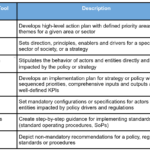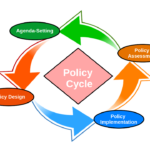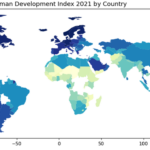Working with the support of the EU and the UN, UNDP Bishkek has just completed a e-readiness report that was undertake by an international e-governance consultant. A copy of the report that was shared with us by UNDP Kyrgyzstan is here: Final Assessment Report 19 Dec. The CO has requested us to provide comments.
Here they are.
1. The report looks good and it is very well presented. It touches on most critical points, uses a simple language and get quickly to the point. It also make very clear recommendations to local counterparts to continue to expand e-governance in the country. By the way, e-readiness assessments reports have been around for over 14 years now and have been mostly and usually focus on access to ICTs. This report goes beyond this approach and factors in human ins institutional factors (among others) which are critical for ICT for Development and e-governance initiatives.
2. Links to national development priorities. Although the report does mention from the very start the 2012-1014 country’s mid-term development strategy, it is not entirely clear how e-government links to other core development priorities -with e-gov apparently being one of such priorities.This is perhaps best reflected in the 10 e-gov programmes being implemented by various agencies and institutions (pg 9.) which by the way seemed quite diverse. Do such programmes some of which probably were launched before the strategy was finalized support the priorities of the development strategy? How about the other 14 planned initiatives mentioned right after (pgs. 10-12)? This point in important for UNDP if we are to focus not on the e-gov index per se but rather on the achievement of the MDGs and other national development priorities.
3. e-readiness methodology. I find the proposed methodology good with 7 core components that cover most bases. It is however not clear where this is coming from nor what us the rationale. It will be helpful if the report can include this. Same goes for the weights given to each “dimension” and the coloring (do components that share color have something in common?). It seems to me for example capacity building, project management and change management are related as are institutional framework and stakeholder commitment. In sum, the analytical framework needs to be further develop.
4. e-readiness assessment. The report seems to them use a different approach to do the actual assessment and then focuses on three areas (infrastructure, services and content, and roll-out model). I found this a bit confusing. At any rate, this is then followed by a excellent SWOT analysis which could have made good use of the 7 dimensions of the e-readiness methodology for further clarity.
5. Recommendations. The report concludes with 7 recommendations, 3 of which are directly linked to 3 of the 7 e-readiness dimensions. Furthermore, the recommendations are not group in any particular fashion. I for one would have linked the issue of donor coordination with the funding requirements mentioned in the text, etc. It also seems that suggesting more pilots instead of trying to scale up or replicate ongoing and successful initiatives can be counterproductive for the establishment of an e-gov PMU which should also have some sort of policy role in the overall e-gov in the country. By the same token, the PMU should not be involved in project implementation.
6. e-services. The report indicates the the delivery of public services via ICTs is one of the priorities of the e-gov implementation strategy. This is spot on. The key question here is which services are included here. Or alternatively, which services are to be prioritized and how do we get there? This links directly to the stakeholder interest and participation in the overall process from its very inception. It an overall strategy already exists, then the PMU+ (with policy capacity) should develop an engagement and communication strategy to ensure that stakeholders are not only involved but also see they are core part of the process. Spreading ownership to all stakeholders should thus be one of the core tasks that can make a difference in the medium and long term. And this in turn will foster transparency and accountability, outcomes that are also core goals of the e-gov strategy.
7. Interoperability. If e-services are a key goal then interoperability should also take center stage.Interoperability is essentially a political process -and not a technical one. It requires that the various institutions involved are in agreement on how to move forward and create a government interoperability framework (GIF) and policy that then brings the required technical solutions for its implementation. The very notion of “one-stop shops” and “single window” mechanisms are only effectively possible if a GIF has been successfully designed and implemented. GIFs do require immediate attention as they can take time to become a reality, specially if the focus of the strategy is on e-gov services.
8. Stakeholder involvement. In addition to what was said on point 6, it is also essential that any implementation strategy also includes a multi-stakeholder consultation strategy and the creation of multi-stakeholder mechanisms (such as advisory or sounding boards) where non-governmental representatives have voice, can participate in key decision-making instances and have a vote when it comes to deciding critical outcomes.
9. Conflict and ICTs. This is one area the report does not pick up. Use of state-of-the-art mobile technologies and crowdsourcing can help build mechanisms that not only manage conflict but also increased preparedness, capacity to response and citizen engagement the such processes. Conflict prevention is this also an important area for any e-gov strategy, specially if the country has already experienced conflict in the recent past.
Cheers, Raúl





